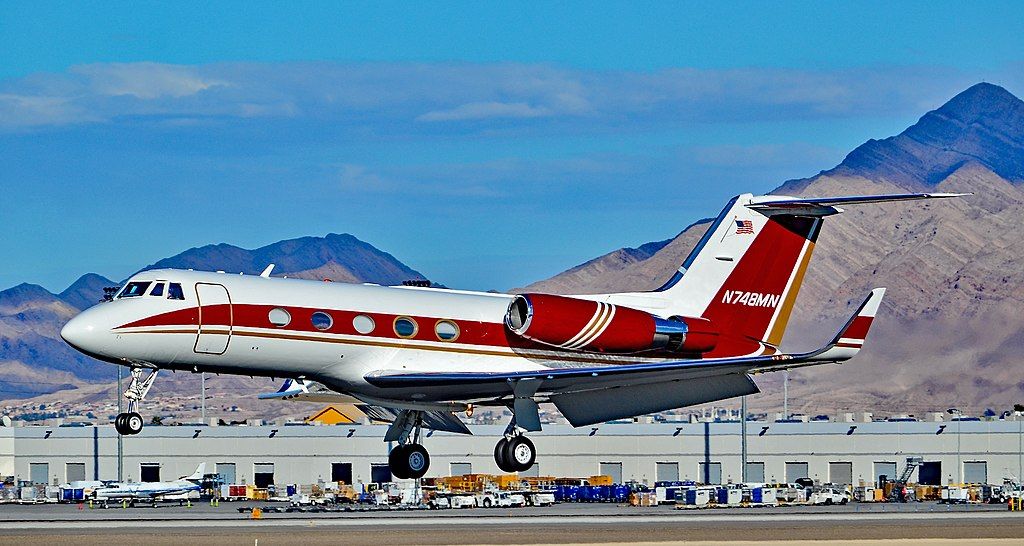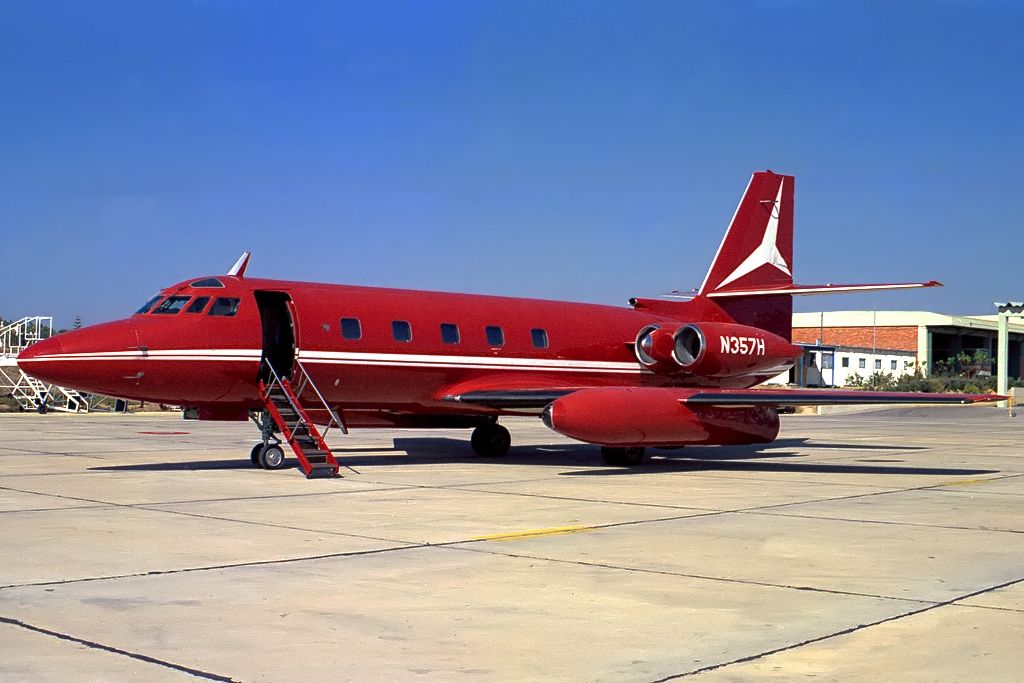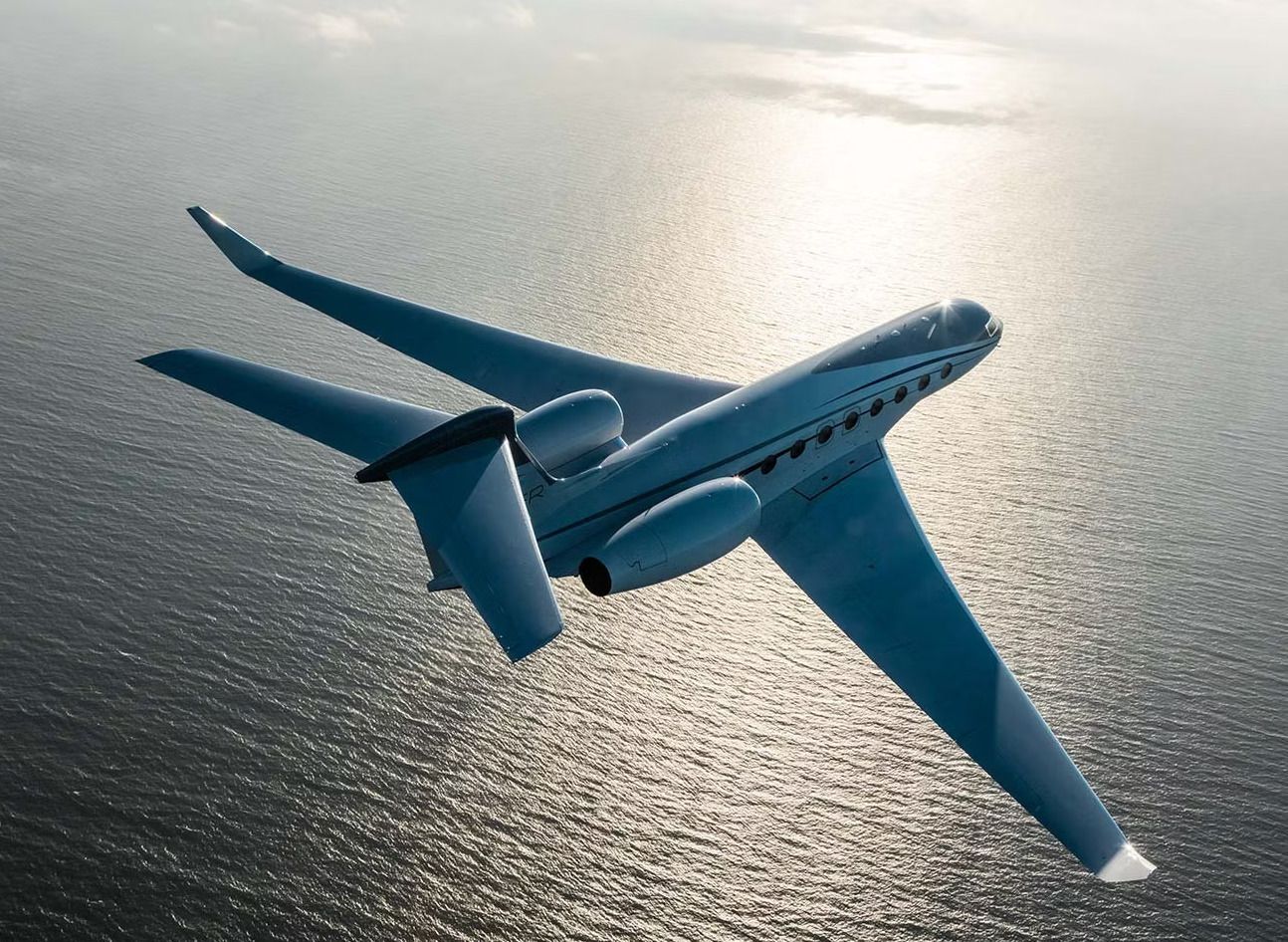When we think of private jets, we often associate them with elegance, luxury, and the promise of a quiet and comfortable flight. However, not all private jets are created equal when it comes to noise levels. While many modern private jets prioritize cabin quietness, these aircraft make sure that those on the ground know of their presence.
Before we dive in, it’s worth highlighting that noise generated by a jet is attributed to two main factors: air flowing over its surface and noise created by its engines. Generally, newer aircraft have better aerodynamics and engine technologies, compared to their older counterparts.
1 Gulfstream II
While sleek and gracious in the sky, this jet, like many others from the 60s and 70s, falls in the category of “noisy jets”. The G-II was in production between 1967 and 1980, with 256 units built during that period. Despite being nearly six decades old, the type is still in service today.
Powered by two Rolls-Royce Spey turbofan engines, which generate substantial noise, the G-II has found its fair share of critics over the years – one of which is the Federal Aviation Administration (FAA). Since 2015, G-IIs that have not been modified with a hushkit are banned from flying in the US.
Love aviation history? Discover more of our stories here.
2 Piaggio Avanti
The Piaggio Avanti is renowned for its unique three-lifting-surface configuration, which contributes to its exceptional aerodynamic efficiency. However, noise is an issue when it comes to this aircraft type.
The interior of the cabin offers a level of quietness that allows for conversations, due to the positioning of the propellors far behind the cabin. However, while on the ground, the Avanti's overflight noise footprint tends to be relatively high – a characteristic commonly associated with pusher aircraft designs.
3 Lockheed JetStar
Another jet from the 60s and 70s that was affected by the FAA’s noise compliance regulations is the Lockheed JetStar, which was generating noise levels that were deemed unacceptable.
In response, the 731 JetStar modification program emerged. This initiative involved equipping the aircraft with new Garrett TFE731 turbofan engines and implementing various detailed changes. The success of the program was so remarkable that Lockheed went on to produce 40 new JetStars, designated as the JetStar II.
Want to know more about sustainability in aviation?
4 Learjet 24
The Learjet 24, being an earlier model in the Learjet series, exhibits characteristics typical of classic light business jets of its era. While its performance and speed capabilities were commendable for its time, the Learjet 24 (as well as the 25 and 28) produced higher noise levels compared to its modern counterparts.
Listed explicitly in the FAA’s noise compliance regulations:
“Any Learjet 24s that have not been modified by installing Stage 3 noise compliant engines or have not had "hushkits" installed for non-compliant engines will not be permitted to fly in the contiguous 48 states after December 31, 2015.”
Get the latest aviation news straight to your inbox: Sign up for our newsletters today.
While these private jets may be louder than others, it's essential to note that modern aviation technology continually strives to minimize noise pollution. Aircraft manufacturers are consistently implementing advancements in engine design and aerodynamics to create quieter and more fuel-efficient aircraft.
Private jet operators and airports also adhere to strict noise abatement procedures to reduce the impact of aircraft noise on surrounding communities. Moreover, advancements in noise-reduction technology within the cabins of private jets further enhance the overall flying experience for passengers, ensuring that private jet travel remains an enjoyable and responsible mode of transportation for years to come.



